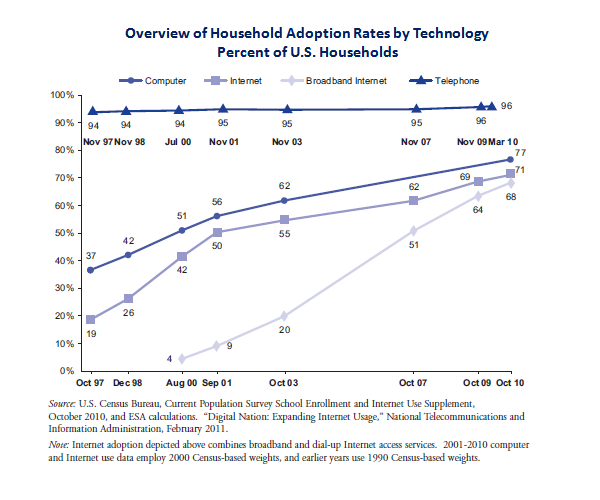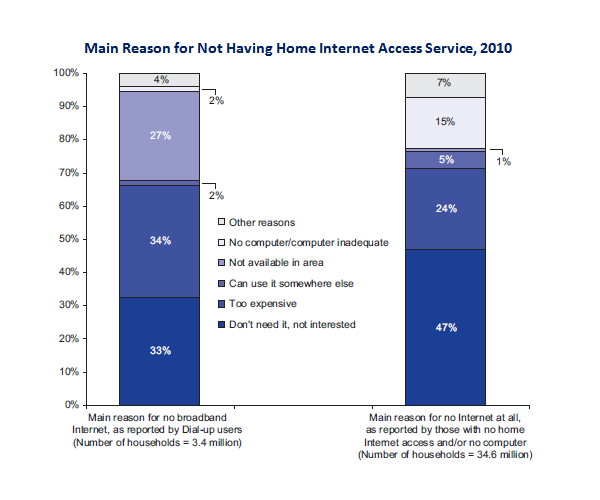The Economics and Statistics Administration (ESA) and the National Telecommunications and Information Administration (NTIA) released a report today entitled “Exploring the Digital Nation: Computer and Internet Use at Home.” This report investigates broadband Internet use in the United States and finds that disparities continue to exist in broadband Internet adoption among demographic and geographic groups. The report also delves into the reasons why households have not adopted broadband Internet, an important input into the design of policies to achieve a more digitally connected nation.
We all know that the Internet increasingly plays a key role in our everyday lives, including applying for and getting today’s jobs. Broadband internet adoption has increased substantially in only a few years, rising to 68% of households in 2010 from only 51% of households three years earlier and from 64% in 2009, the last time ESA and NTIA looked at these issues.

While this points to progress, a digital divide still exists between different racial and ethnic groups and between urban and rural areas in the United States. Broadband adoption rates varied substantially between different racial and ethnic groups, with 81% of Asian and 72% of White households having broadband Internet access, compared to only 55% and 57% of Black and Hispanic households. The urban-rural divide is also wide, with 70% of urban households having broadband Internet access compared to only 57% of rural households. Socio-economic differences, such as income and education, explain much – but not all – of this divide.
Creating effective solutions to promote greater adoption of broadband Internet requires an improved understanding of the barriers to adoption. Is it lack of access? Is it lack of money? Or is it a lack of experience with using computers and a lack of familiarity with all that the Internet has to offer?
Here is what we know: Households that do not subscribe to any Internet service—dial-up or broadband —cited as the main reasons a lack of need or interest (47%); lack of affordability (24%); and an inadequate computer (15%). However, 27% of dial-up users -- a rapidly declining group of users --- indicated that they did not have broadband internet access service in their area.

Clearly, there is no single solution to closing the digital divide; we need a variety of targeted approaches. One important step in the right direction is NTIA’s Broadband Technology Opportunities Program (BTOP), funded by the Recovery Act. BTOP is addressing the digital divide on multiple fronts through projects that are expanding public computer centers, teaching online skills, and bringing broadband service to unserved and underserved communities.
A digitally connected population, which helps fosters innovation, economic growth and social communication, is critical for U.S. competitiveness in a global economy. The better we understand the reasons for the digital divide, the more effective we will be in solving it.

